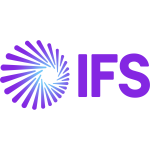Based on my knowledge and experience during the transformation phase with the tool, I think the product provides things in a very planned manner in terms of the data, migration with different phases and testing, and servers to move to, making it a very easy process and very comfortable to move to it from another solution.
The product's high cost is an area of concern where improvements are required.
I have been using SAP S/4HANA for a few days. I am not a user of the tool, but I work as a support in my company to help integrate the solution with some other software products. I look into the secondary sales systems. I am not the core user of the product.
My company's technical team and IT team may have had the need to contact the solution's technical support team.
My company switched over to SAP S/4HANA from SAP ECC, which was a legacy system and did not operate in real-time while there was need for some customizations leading to different challenges. Globally, every organization has moved to tSAP S/4HANA for improved processes and real-time analytics. I think the core objectives of the founder of the organization stems from the aforementioned details.
The solution can be deployed and implemented in a year because my organization has a very huge infrastructure of SAP. My company has bought different modules and data from SAP, so going through the documentation and everything takes time during the implementation phase.
Whether the product is expensive or not is something that may vary from company to company. If I consider my organization, I feel that the product is a bit expensive. Myorganization is not currently using big modules like S/4HANA and the other different modules. Though National Food Limited is a global organization, I think the tool is costly. National Food Limited wants to grow up with the technology since the founder states that they have a certain benchmark in the world. The product is worth the money.
My background is in providing support for software tools our company uses for order booking and for secondary sales software, which consists of mobile booking for markets and stores. For analytical dashboards, my company uses Power BI, which is connected to the software tools we use in the company. For integrations with SAP S/4HANA, my company has connected a few databases with inbound and outbound APIs.
My company is very satisfied with the tool and I believe that it is going to be a very good transformation for our organization. Before my company used to work on SAP ECC, and now we are migrating to SAP S/4HANA. Everyone in our company has very good experience with SAP. Now, my company is going to go live in a week or two.
My company uses the tool to make end-to-end processes easier, and we have a consultant named Reynold from PwC. My company uses the consultancy service offered by PwC to manage National Foods Limited and SAP.
My company plans to use the tool for real-time analytics or decision-making. I think the founder of my organization admires the fact that with SAP's technology, we are able to use real-time information and it is a good improvement in the strategic area and the directions. SAP Integrated Business Planning (IBP) Forecasting Algorithms can definitely be helpful.
I am not able to comment much about the solution since my company is still in the transformation stage.
The user interface of SAP S/4HANA is user-friendly. In different modules, like financial and production ones, I have experienced the use of the tool with different people who have mentioned that it is a very helpful product for them.
I have worked with Fiori UI/UX and also with SAP IBP and SAP SAC. In SAP, the dashboard can be managed in real-time.
The product helps increase the data processing speed, especially in areas like workflow. When it comes to the financial aspect, the tool provides very strong financial and credit limits, which is a very good feature of the tool, as it can help the organization move to a certain level.
I rate the tool a ten out of ten.
















